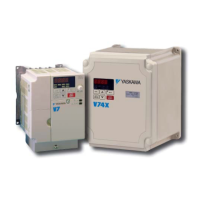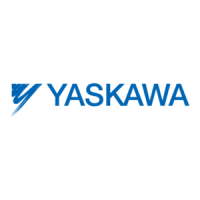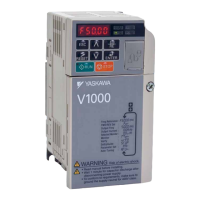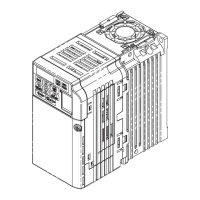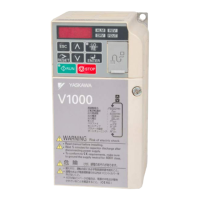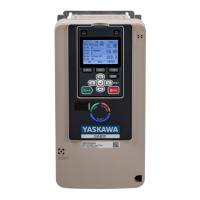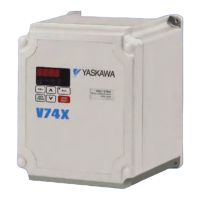No. Name Setting Range Default
n3-02 High Slip Braking Current Limit 100 to 200% 150%
n
n3-03: High Slip Braking Dwell Time at Stop
When the motor reaches a relatively low speed at the end of HSB, the output frequency is kept at the minimum output
frequency
E1-09 for the time set in n3-03.
Increase this time if the inertia is very high and the motor is still coasting after
HSB is complete.
No. Name Setting Range Default
n3-03 High Slip Braking Dwell Time at Stop 0.0 to 10.0 s 1.0 s
n
n3-04: High Slip Braking Overload Time
Sets
the time required for an HSB overload
fault (oL7) to occur when the drive output frequency does not change for some
reason during an HSB stop.
No. Name Setting Range Default
n3-04 High Slip Braking Overload Time 30 to 1200 s 40 s
n
n3-13: Overexcitation Deceleration Gain
Applies a gain to the V/f pattern output value during overexcitation deceleration, thereby determining the level of
overexcitation. The drive returns to the normal V/f value after the motor has stopped or when it is accelerating to the
frequency reference.
No. Name Setting Range Default
n3-13 Overexcitation Deceleration Gain 1.00 to 1.40 1.10
The optimum setting for n3-13 depends on the motor flux saturation characteristics.
• Increase the gain by 1.25 to 1.30 to improve the breaking power of overexcitation.
• Reduce the value when the motor
slip gets too high, which can trigger overcurrent (oC), motor overload (oL1), or drive
overload (oL2) faults. Alternatively reduce n3-21.
n
n3-21: High Slip Suppression Current Level
If overcurrent, oL1, or oL2 occur during overexcitation deceleration, reduce the overslip suppression current level. Set as
a percentage of the drive rated current.
Reduce this setting if the current during overexcitation deceleration exceeds the overslip suppression current set in n3-21
as a result of flux saturation and excessive slip. Alternatively reduce the overexcitation gain n3-13.
No. Name Setting Range Default
n3-21 Overslip Suppression Current Level 0 to 150% 100%
n
n3-23: Overexcitation Operation Selection
Determines
which direction overexcitation can be used in.
However, parameter L3-04 must be set to 4 in order for n3-23
to be enabled.
No. Name Setting Range Default
n3-23 Overexcitation Operation Selection 0 to 2 0
Setting 0: Enabled in Both Directions
Setting 1: Enabled in Forward Direction Only
Setting 2: Enabled in Reverse Direction Only
u
n6: Motor Line-to-Line Resistance Online Tuning
The drive can tune the motor line-to-line resistance during run in order to prevent torque loss due to a rise in motor
temperature increase, especially at low speeds.
n
n6-01: Motor Line-to-Line Resistance Online Tuning Selection
No. Name Setting Range Default
n6-01 Motor Line-to-Line Resistance Online Tuning 0 or 1 1
5.9 n: Special Adjustments
YASKAWA ELECTRIC SIEP C710606 16C YASKAWA AC Drive – V1000 Technical Manual
231
5
Parameter Details
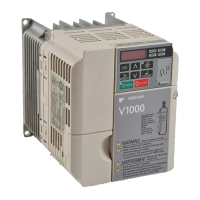
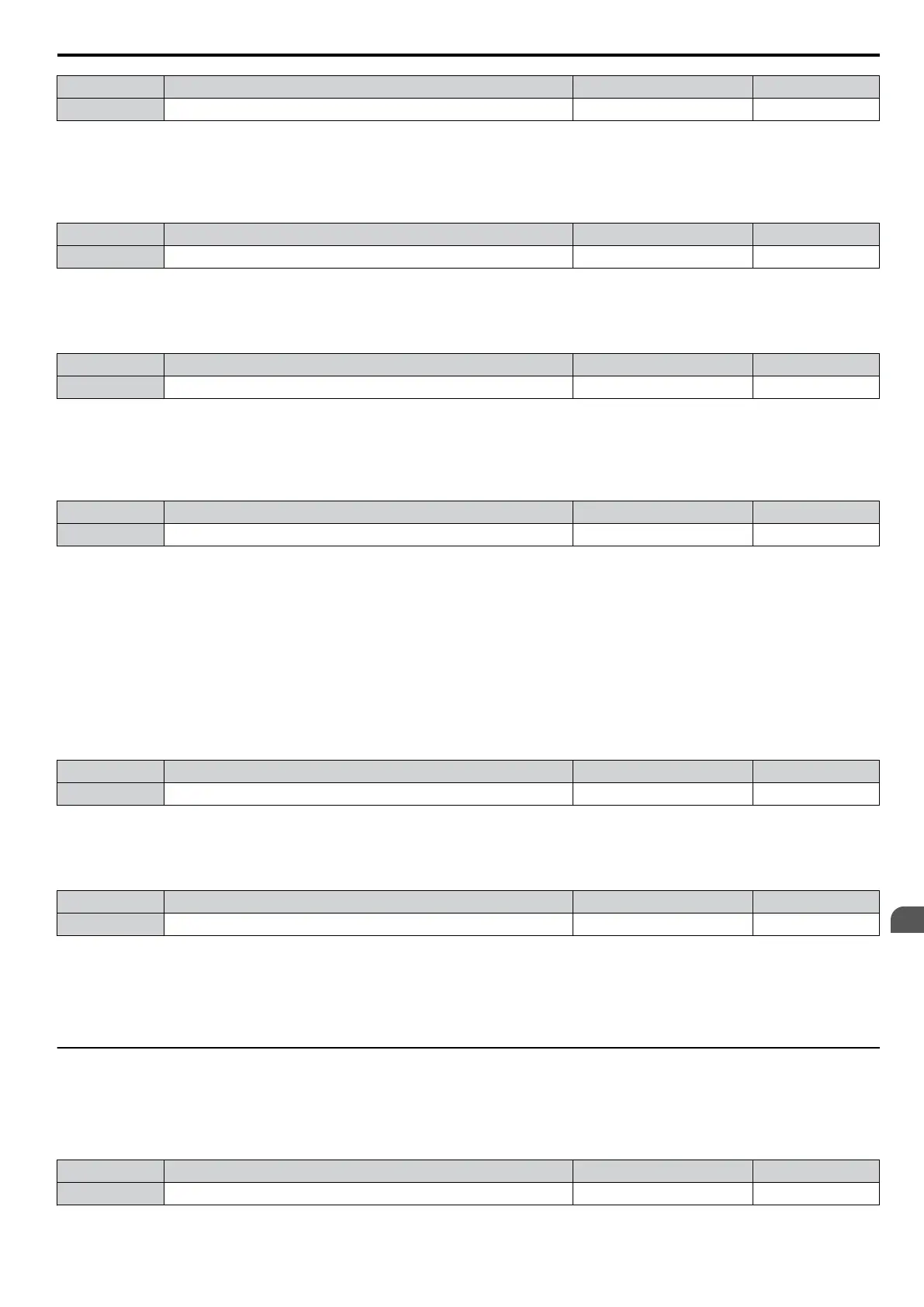